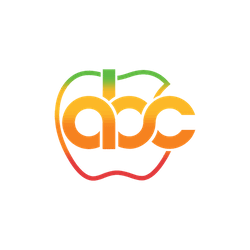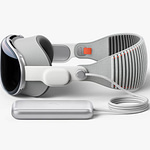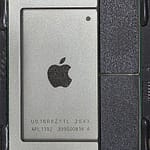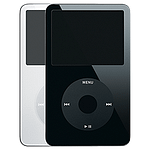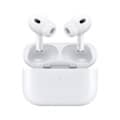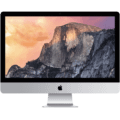- All Apple Devices
- iPod
- Apple iPod Nano 6th Generation
Apple iPod Nano 6th Generation
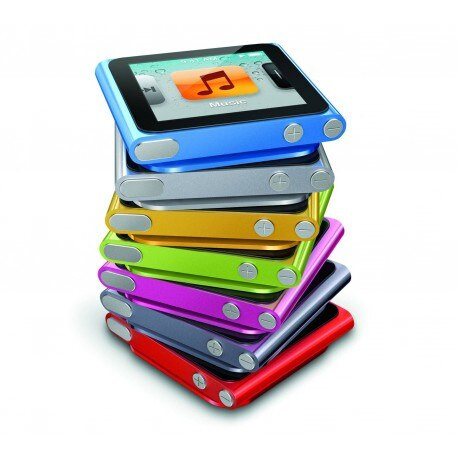
iPod Nano 6th Generation

Product Brand: Apple
4
Pros
- Compact and lightweight design
- Multitouch display for easy navigation
- Good battery life
- FM radio tuner and pedometer
- Available in a range of colours
- Voice-over feature for accessibility
Cons
- Limited storage capacity
- No camera or video recording capabilities
- No built-in speaker
- Non-standard charging cable
- Limited app support
- Screen can be difficult to read in bright sunlight
Apple iPod Nano 6th Generation Review and Features
At a media event on September 1, 2010, Apple announced the sixth generation iPod Nano, which, among many new features, was designed around a high-resolution square touch-screen.
The device featured a small 1.55-inch multi-touch screen with a lower resolution of 240×240 pixels but a higher pixel density of 220 pixels per inch, as opposed to the larger 2.2-inch screen on the fifth-generation iPod Nano.
The device had a 0.39 watt-hour battery rated at 3.7 volts, giving a capacity of 105 mAh, and specified to give 24 hours of music playback on a single full charge. The device takes about three hours for one full charge. The device retained the same 30-pin dock connector as previous generations.
This Nano lost the previous generation’s video camera, built-in voice recorder microphone (although plugging in headphones with a built-in microphone revealed a Voice Memos app), built-in speaker, and games.
It also lost support for video playback, but music videos and video podcasts (vodcasts) could be synced onto the device, and the audio from them would play on the device, with a single key-frame shown on the screen.
It still included the Nike+iPod fitness option and an FM radio tuner with RDS (Radio Data System). It had a black-on-white screen contrast option and other accessibility options. The 6th generation iPod Nano had the same price point as the 5th generation device.
A firmware update (version 1.1) for the Nano was released on February 28, 2011. The update added the ability to change songs or pause with a double click of the sleep/wake button. It also added the ability to turn the device off by holding the sleep/wake button. The user interface was also enhanced. On October 4, 2011, the iPod Nano 1.2 update was unveiled at the Apple “Let’s Talk iPhone” event at the Town Hall, 4 Infinite Loop.
This update added the option to increase or decrease the size of the home buttons for easier use. The update also added a better fitness app with a better pedometer split into walking and running styles.
The update also included 16 new clock faces, which included designs like a Nixie tube clock face or an old-style clock face, and Disney-licensed designs, such as Mickey Mouse and Kermit the Frog, bringing to a total of 18 clock faces. Three more background images were also added.
Although not specifically designed as one, some accessory makers produced watch bands for the 6th generation Nano, allowing it to be worn like a watch.
Full Technical Specifications
General Technical Specifications
| Device Type | Portable Media Player |
| Released | 01 September, 2010 |
| Status | Discontinued |
| Predecessor | iPod Mini |
| Successor | iPod Touch |
| Generation | 6th |
| Colors | Silver, Graphite, Blue, Green, Orange, Pink and (PRODUCT) RED Special Edition. |
| Input and Output |
Dock connector 3.5-mm stereo headphone jack |
| iPod's Processor Type | Samsung ARM |
| iPod's Processor Speed | NA |
| RAM | 32 MB |
| iPod's Internal Memory |
8GB 16GB |
| Connectivity | USB |
| FM Radio Support |
Yes Regional settings for the Americas, Asia, Australia, Europe, and Japan Live Pause feature for pausing a radio broadcast and rewinding (within a 15-minute buffer) |
| Audio Technology Features |
Audio Playback Frequency response: 20Hz to 20,000Hz Audio formats supported: AAC (8 to 320 Kbps), Protected AAC (from iTunes Store), HE-AAC, MP3 (8 to 320 Kbps), MP3 VBR, Audible (formats 2, 3, 4, Audible Enhanced Audio, AAX, and AAX+), Apple Lossless, AIFF, and WAV |
| Headphone Type | 3.5mm Audio jack |
| Display Info |
1.54-inch (diagonal) color TFT display 240-by-240-pixel resolution 220 pixels per inch |
| Dimensions |
Height: 1.48 inch (37.5 mm) Width: 1.61 inch (40.9 mm) Depth: 0.35 inch (8.78 mm) including clip Volume: 0.614 cu. inch (10,056 cu. mm) |
| Weight | 0.74 ounce (21.1 grams) |
| Camera | No |
| Sensors Sensors are electronic components that detects and responds to some type of input from the physical environment. The specific input could be light, heat, motion, moisture, pressure and location, The output is generally a signal that is converted to use in computing systems, a location sensor, such as a GPS receiver is able to detect current location of your electronic device. | Accelerometer |
| SIM SIM (Subscriber Identity Module) is a small card that contains mobile network subscriber's account information. This allows the phone using the card to attach to a mobile network. The SIM card is most commonly associated with GSM and UMTS mobile networks. Moving a SIM card from one phone to another allows a subscriber to switch mobile phones without having to contact their mobile network carrier. SIM cards can also be used by a phone to store limited amounts of data, such as phone numbers and text messages. | No SIM |
| Battery |
Built-in rechargeable lithium-ion battery Up to 24 hours of music playback when fully charged Charging via USB to computer system or power adapter (sold separately) Fast-charge time: about 1.5 hours (charges up to 80% of battery capacity) Full-charge time: about 3 hours |
| Navigation | Multitouch screen |
Disclaimer Note
We can not guarantee that the information on this page is 101% correct.
